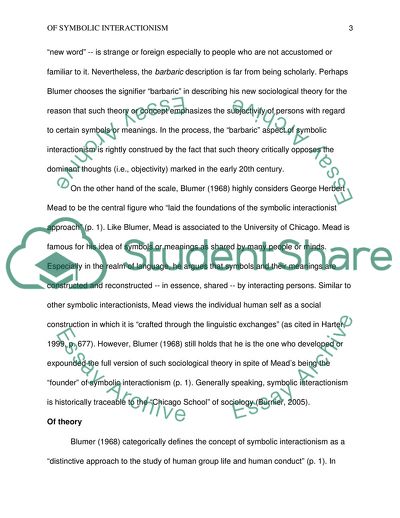Cite this document
(Sociological Theory of Symbolic Interactionism Essay Example | Topics and Well Written Essays - 1250 words - 1, n.d.)
Sociological Theory of Symbolic Interactionism Essay Example | Topics and Well Written Essays - 1250 words - 1. https://studentshare.org/sociology/1750845-sociology-theory-of-symbolic-interactionism
Sociological Theory of Symbolic Interactionism Essay Example | Topics and Well Written Essays - 1250 words - 1. https://studentshare.org/sociology/1750845-sociology-theory-of-symbolic-interactionism
(Sociological Theory of Symbolic Interactionism Essay Example | Topics and Well Written Essays - 1250 Words - 1)
Sociological Theory of Symbolic Interactionism Essay Example | Topics and Well Written Essays - 1250 Words - 1. https://studentshare.org/sociology/1750845-sociology-theory-of-symbolic-interactionism.
Sociological Theory of Symbolic Interactionism Essay Example | Topics and Well Written Essays - 1250 Words - 1. https://studentshare.org/sociology/1750845-sociology-theory-of-symbolic-interactionism.
“Sociological Theory of Symbolic Interactionism Essay Example | Topics and Well Written Essays - 1250 Words - 1”. https://studentshare.org/sociology/1750845-sociology-theory-of-symbolic-interactionism.


